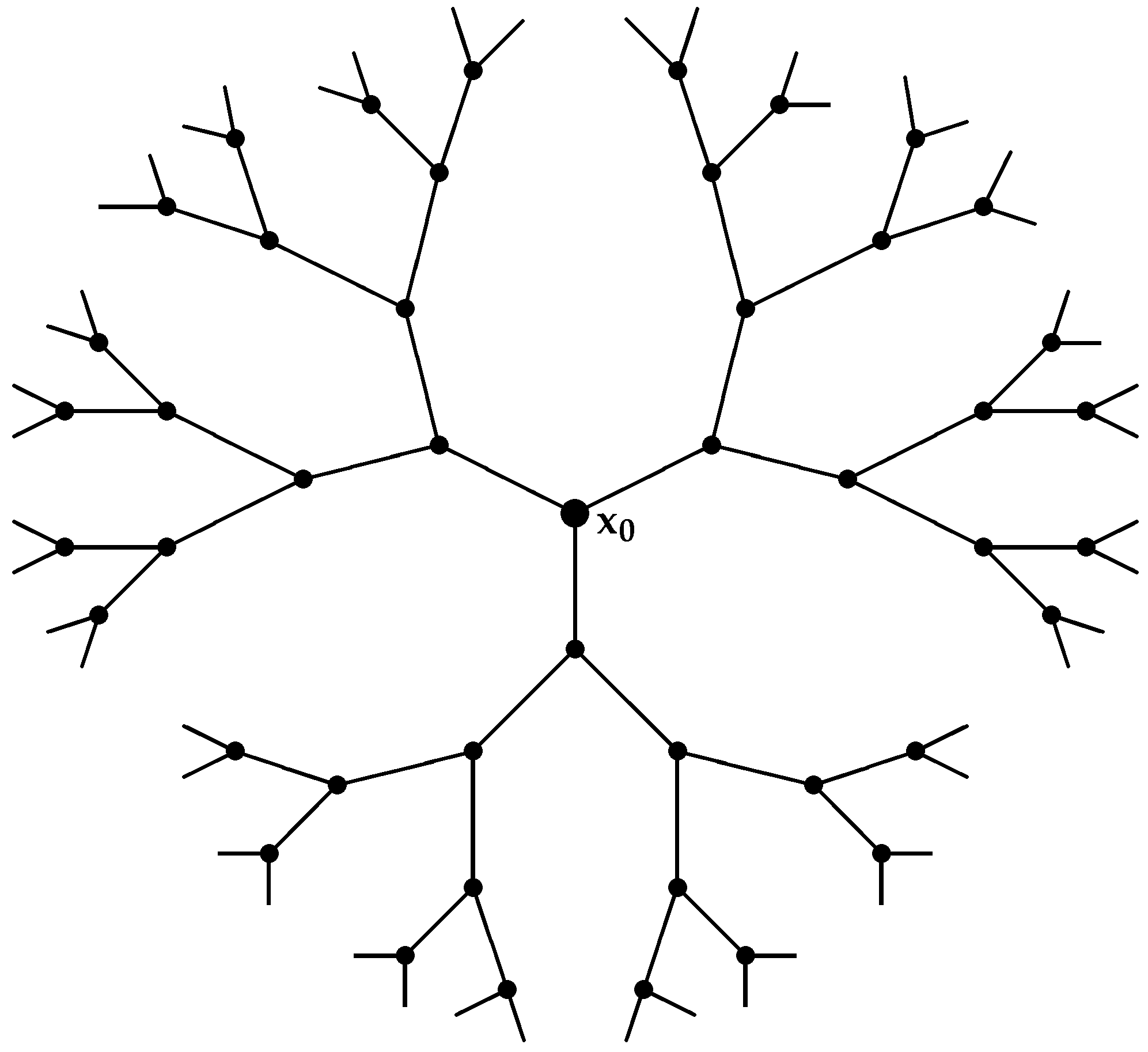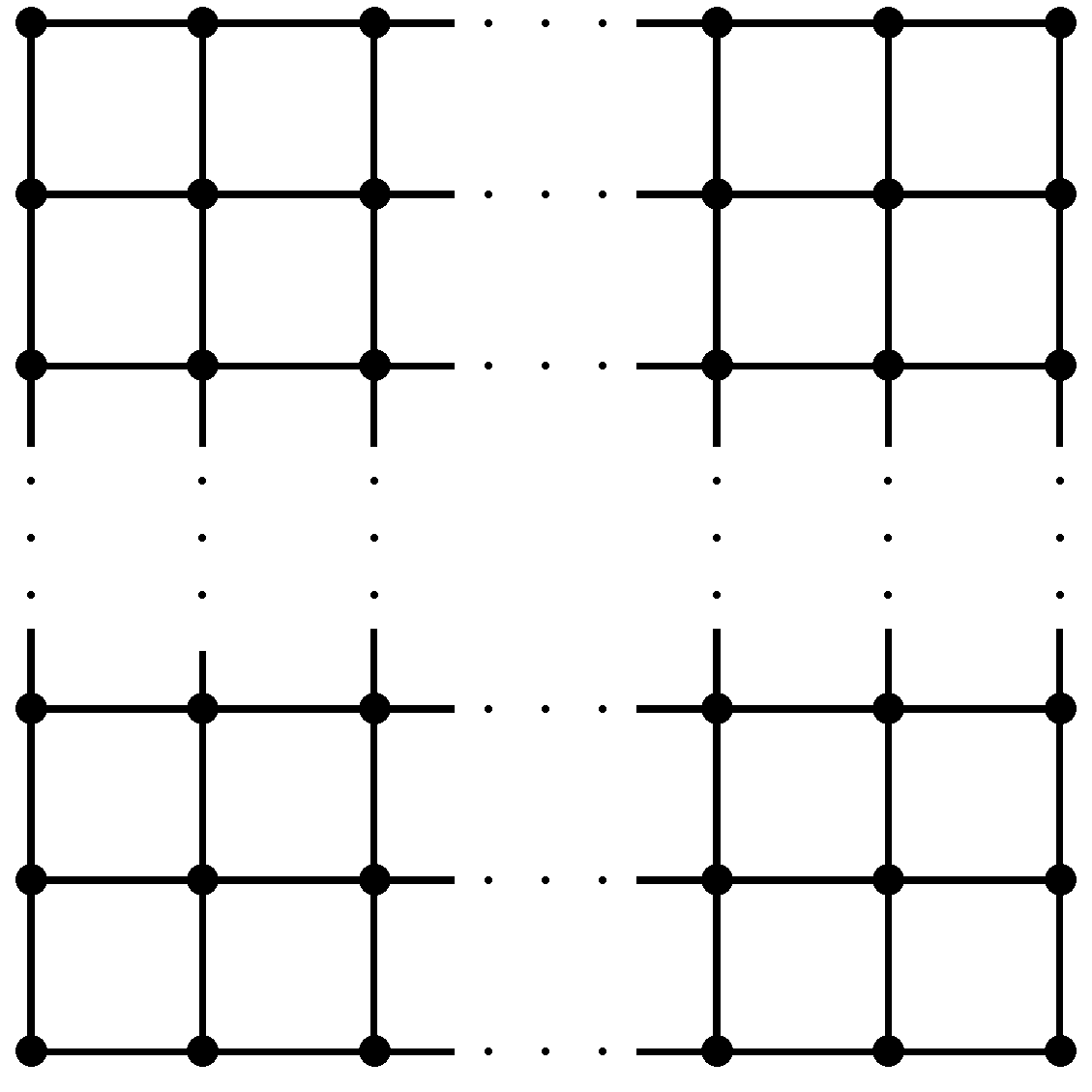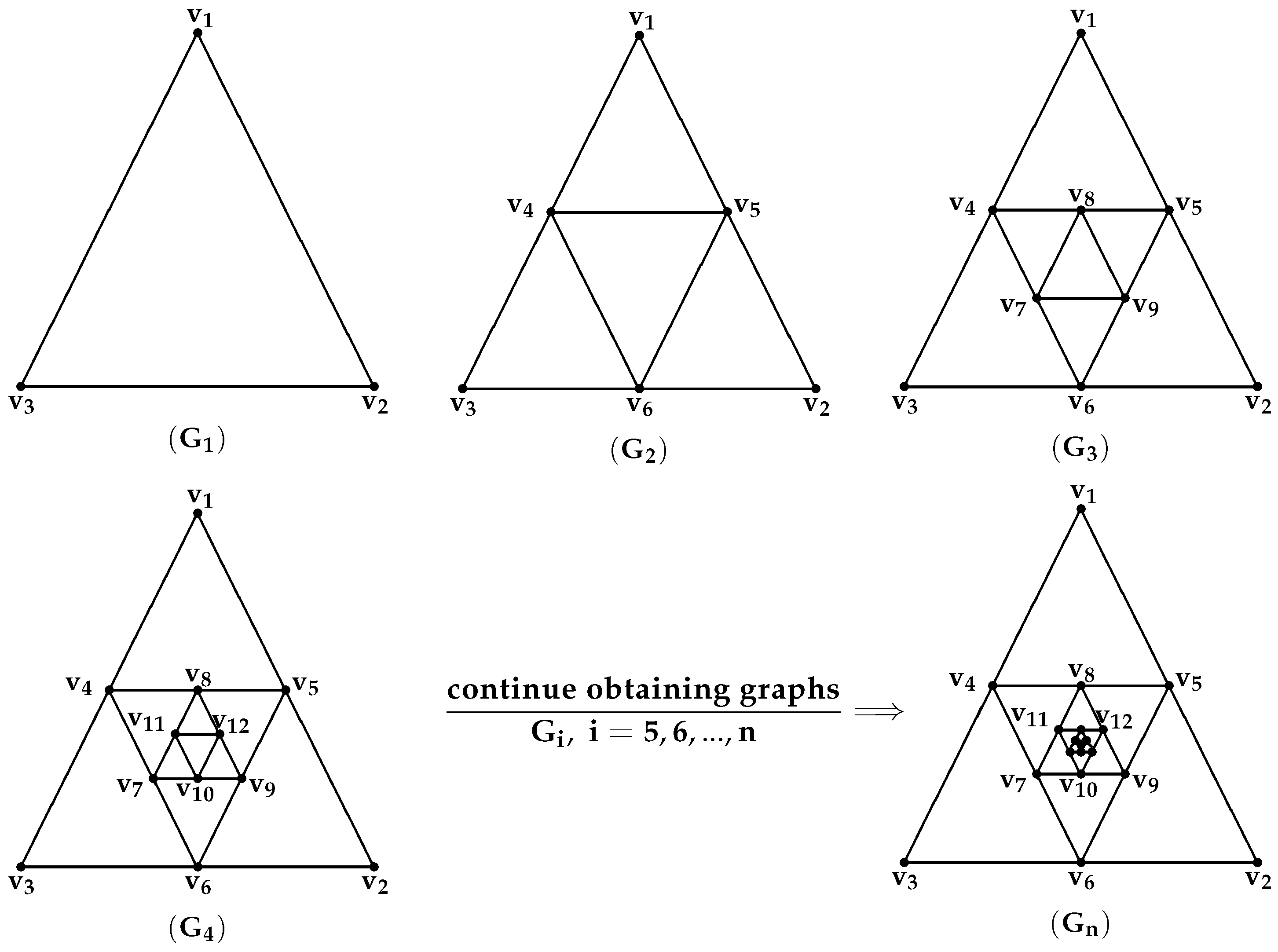1. Introduction
Graph theory, as applied in the study of molecular structures, represents an interdisciplinary science called chemical graph theory or molecular topology. By using tools taken from graph theory, set theory and statistics, we attempt to identify structural features involved in structure–property activity relationships. Molecules and modeling unknown structures can be classified by the topological characterization of chemical structures with desired properties. Much research has been conducted in this area in the last few decades. The topological index is a numeric quantity associated with chemical constitutions purporting the correlation of chemical structures with many physicochemical properties, chemical reactivity or biological activity. Topological indices are designed on the grounds of the transformation of a molecular graph into a number that characterizes the topology of the molecular graph. We study the relationship between the structure, properties, and activity of chemical compounds in molecular modeling. Molecules and molecular compounds are often modeled by molecular graphs. A chemical graph is a model used to characterize a chemical compound. A molecular graph is a simple graph whose vertices correspond to the atoms and whose edges correspond to the bonds. It can be described in different ways, such as by a drawing, a polynomial, a sequence of numbers, a matrix or by a derived number called a topological index. The topological index is a numeric quantity associated with a graph, which characterizes the topology of the graph and is invariant under a graph automorphism. Some major types of topological indices of graphs are degree-based topological indices, distance-based topological indices and counting-related topological indices. The degree-based topological indices, the atom-bond connectivity (
) and geometric–arithmetic (
) indices, are of great importance, with a significant role in chemical graph theory, particularly in chemistry. Precisely, a topological index
of a graph is a number such that, if
H is isomorphic to
G, then
=
. It is clear that the number of edges and vertices of a graph are topological indices [
1,
2,
3,
4,
5,
6,
7]. We let
be a simple graph, where
denotes its vertex set and
denotes its edge set. For any vertex
, we call the set
the open neighborhood of
u; we denote by
the degree of vertex
u and by
the degree sum of the neighbors of
u. The number of vertices and number of edges of the graph
G are denoted by
and
, respectively. A simple graph of order
n in which each pair of distinct vertices is adjacent is called a complete graph and is denoted by
. The notation in this paper is taken from the books [
3,
8,
9,
10].
In this paper, we study the molecular topological properties of some special graphs: Cayley trees, ; square lattices, ; a graph ; and a complete bipartite graph, . Additionally, the indices , , and of these special graphs, whose definitions are discussed in the materials and methods section, are computed.
Definition 1. [11] The oldest degree-based topological index, the Randi’c index, denoted by , is defined as Definition 2. [12] For any real number , the general Randi’c index, , is defined as Definition 3. [13]. The degree-based topological ABC index is defined as Definition 4. [2]. The degree-based topological GA index is defined as Recently, several authors have introduced new versions of the and indices, which we derive in the two definitions below.
Definition 5. [14]. The fourth version of the ABC index is defined as Definition 6. [15]. The fifth version of the GA index is defined as The concept of topological indices came from Wiener [
16] while he was working on the boiling point of paraffin and was named the index path number. Later, the path number was renamed as the Wiener index [
17]. Hayat et al. [
1] studied various degree-based topological indices for certain types of networks, such as silicates, hexagonals, honeycombs and oxides. Imran et al. [
7] studied the molecular topological properties and determined the analytical closed formula of the
,
,
,
,
and
indices of Sierpinski networks. M. Darafsheh [
18] developed different methods to calculate the Wiener index, Szeged index and Padmakar–Ivan index for various graphs using the group of automorphisms of
G. He also found the Wiener indices of a few graphs using inductive methods. A. Ayache and A. Alameri [
19] provided some topological indices of
-graphs, such as the Wiener index, the hyper-Wiener index, the Wiener polarity, Zagreb indices, Schultz and modified Schultz indices and the Wiener-type invariant. Wei Gao et al. [
20] obtained certain eccentricity-version topological indices of the family of cycloalkanes
. Recently, there has been extensive research into
and
indices, as well as into their variants. For further studies of topological indices of various graphs and chemical structures, see [
21,
22,
23,
24,
25,
26].
3. Results and Discussion
Prior to presenting our main results, the edge partitions of the Cayley tree, lattice square, and complete bipartite graph, on the basis of the degrees of end vertices of each edge and the degree sum of the neighbors of end vertices of each edge, are discussed below.
Referring to
Figure 1, there are two types of edges in
on the basis of the degrees of the end vertices of each edge, as follows: the first type, for
, is such that
and
; the other type is, for
such
In the first type, there are
edges, and in the other type, because
, there are
edges, as is shown in
Table 1. Similarly, from
Figure 1, there are three types of edges in
on the basis of the degree sum of vertices lying at a unit distance from the end vertices of each edge, as follows: the first type, for
, is such that
and
; the second type, for
, is such that
and
; the third type, for
, is such that
There are
,
, and
edges in the first, second and third types of
, respectively, as is shown in
Table 2.
Referring to
Figure 2, there are four types of edges in
on the basis of the degrees of the end vertices of each edge, as follows: the first type, for
, is such that
and
; the second type, for
, is such that
and
; the third type, for
, is such that
and
; the fourth type, for
, is such that
. Because
, then there are 8,
,
, and
edges in the first, second, third and fourth types of
, respectively, as is shown in
Table 3.
Similarly, from
Figure 2, there are nine types of edges in
on the basis of the degree sum of vertices lying at a unit distance from the end vertices of each edge, as follows:
For such that and , there are 8 edges.
For such that and , there are 8 edges.
For such that and , there are edges.
For such that and , there are 8 edges.
For such that and , there are edges.
For such that and , there are 8 edges.
For such that and , there are edges.
For such that and , there are edges.
For such that and , and because , then there are edges.
Table 4 shows the edge partition of the square lattice
on the basis of the degree sum of vertices lying at a unit distance from the end vertices of each edge.
Referring to
Figure 3, for the edge partition of
on the basis of the degrees of the end vertices of each edge, we have two cases for
and
, as follows:
For
, because
, then there are 3 edges such that
, as is shown in
Table 5.
For
, there are two types of edges in
, as follows: the first type, for
, is such that
and
; the other type, for
, is such that
. In the first type, there are 6 edges, and in the other type, because
, then there are
edges, as is shown in
Table 6.
Similarly, from
Figure 3, for the edge partition of
on the basis of the degree sum of vertices lying at a unit distance from the end vertices of each edge, we have three cases for
,
and
, as follows:
For
, because
, then there are 3 edges such that
, as is shown in
Table 7.
For
, there are two types of edges in
, as follows: the first type, for
, is such that
and
; the other type, for
, is such that
. There are 6 edges in the first type of
and 3 edges in the second type of
, as is shown in
Table 8.
For
, there are three types of edges in
, as follows: the first type, for
, is such that
and
; the second type, for
, is such that
and
; the third type, for
, is such that
. There are 6
in both the first type and the second type of
, and because
, then there are
edges, as is shown in
Table 9.
Referring to
Figure 4, for the complete bipartite graph
, because
and
, where
, then the number of edges of
on the basis of the degrees of the end vertices of each edge is such that
, and
is equal to the number of edges of
on the basis of the degree sum of the vertices lying at a unit distance from the end vertices of each edge such that
and both of them are equal to
, as is shown in
Table 10 and
Table 11 respectively.
Using the data of the edge partition, which is presented in
Table 1,
Table 2,
Table 3,
Table 4,
Table 5,
Table 6,
Table 7,
Table 8,
Table 9,
Table 10 and
Table 11, we can derive the following theorems.
Theorem 1. For the Cayley tree , the ABC index and the fourth version of the ABC index are equal to the following, respectively:
- 1.
.
- 2.
.
Proof From
Table 1, by using the edge partition of
on the basis of the degrees of the end vertices of each edge, and because
this implies that
After an easy simplification, we obtain
By using the edge partition of
on the basis of the degree sum of the neighbors of the end vertices of each edge in
Table 2, and because
this implies that
After an easy simplification, we obtain
By Equations (
1) and (
2), we complete the proof of the result. ☐
Theorem 2. For the Cayley tree , the GA index and the fifth version of the GA index are equal to the following, respectively:
- 1.
- 2.
Proof From
Table 1 by using the edge partition of
on the basis of the degrees of the end vertices of each edge, and because
this gives that
After an easy simplification, we obtain
By using the edge partition of
on the basis of the degree sum of the neighbors of the end vertices of each edge shown in
Table 2, and because
this gives that
After an easy simplification, we obtain
By Equations (
1) and (
2), we complete the proof of the result. ☐
Theorem 3. For the square lattice graph the ABC index and the fourth version of the ABC index are equal to the following, respectively:
- 1.
- 2.
Proof From
Table 3, by using the edge partition of
on the basis of the degrees of the end vertices of each edge, and because
this implies that
After an easy simplification, we obtain
By using the edge partition of
on the basis of the degree sum of the neighbors of the end vertices of each edge shown in
Table 4, and because
this implies that
After an easy simplification, we obtain
By Equations (
1) and (
2), we complete the proof of the result. ☐
Theorem 4. For the square lattice graph the GA index and the fifth version of the GA index are equal to the following, respectively:
- 1.
- 2.
Proof From
Table 3, by using the edge partition of
on the basis of the degrees of the end vertices of each edge, and because
this gives that
After an easy simplification, we obtain
By using the edge partition of
on the basis of the degree sum of the neighbors of the end vertices of each edge shown in
Table 4, and because
this gives that
After an easy simplification, we obtain
By Equations (
1) and (
2), we complete the proof of the result. ☐
Theorem 5. For the graph , where and ,the ABC index is equal to the following: Proof We prove this by using
Table 5 and
Table 6. We use the edge partition of
on the basis of the degrees of the end vertices of each edge.
Table 5 and
Table 6 explain such a partition for the graph
for
and
, respectively. Now by using the partitions given in
Table 5 and
Table 6, we can apply the formula of the
index to compute this index for the graph
.
Because we have
this gives, for
,
For
, because we have,
this gives
This proves the result. ☐
Theorem 6. For the graph , where and , the GA index is equal to the following: Proof We prove this by using
Table 5 and
Table 6. We use the edge partition of
on the basis of the degrees of the end vertices of each edge.
Table 5 and
Table 6 explain such a partition for the graph
for
and
, respectively. Now by using the partitions given in
Table 5 and
Table 6, we can apply the formula of the
index to compute this index for the graph
.
Because we have
this implies, for
,
For
, because we have
this implies that
This proves the result. ☐
Theorem 7. For the graph , where and , the fourth version of the ABC index is equal to the following: Proof We prove this by using
Table 7,
Table 8 and
Table 9. We use the edge partition of
on the basis of the degree sum of the neighbors of the end vertices of each edge.
Table 7,
Table 8 and
Table 9 explain such a partition for the graph
for
,
and
, respectively. Now by using the partitions given in
Table 7,
Table 8 and
Table 9, we can apply the formula of the
index to compute this index for the graph
.
Because we have
this gives, for
,
For
, because we have
this gives
After an easy simplification, we obtain
For
because we have,
this gives
After an easy simplification, we obtain
This proves the result. ☐
Theorem 8. For the graph where and , the fifth version of the GA index is equal to the following: Proof We prove this by using
Table 7,
Table 8 and
Table 9. We use the edge partition of
on the basis of the degree sum of the neighbors of the end vertices of each edge.
Table 7,
Table 8 and
Table 9 explain such a partition for the graph
for
,
and
, respectively. Now by using the partitions given in
Table 7,
Table 8 and
Table 9, we can apply the formula of the
index to compute this index for the graph
.
Because we have
this gives, for
,
For
because we have
this gives
After an easy simplification, we obtain
For
because we have
this gives
After an easy simplification, we obtain
This proves the result. ☐
Theorem 9. For the complete bipartite graph the ABC index and the fourth version of the ABC index are equal to the following, respectively:
- 1.
- 2.
Proof By Equations (
1) and (
2), we complete the proof of the result. ☐
Theorem 10. For the complete bipartite graph , the GA index and the fifth version of the GA index are equal to the following, respectively:
2. Proof By Equations (
1) and (
2), we complete the proof of the result. ☐









